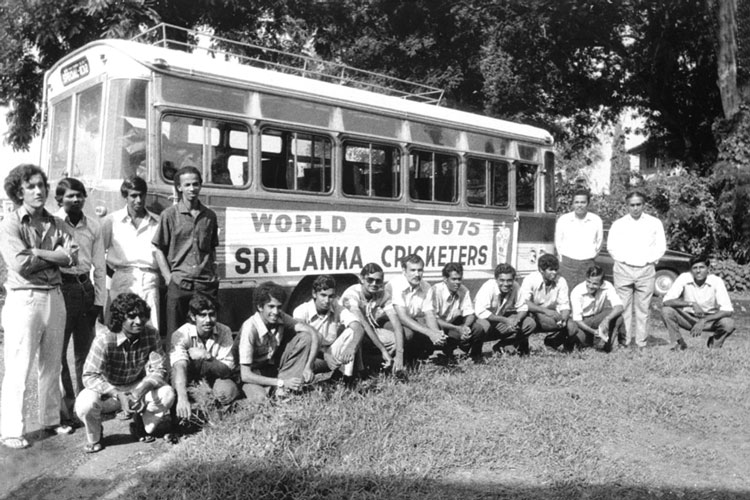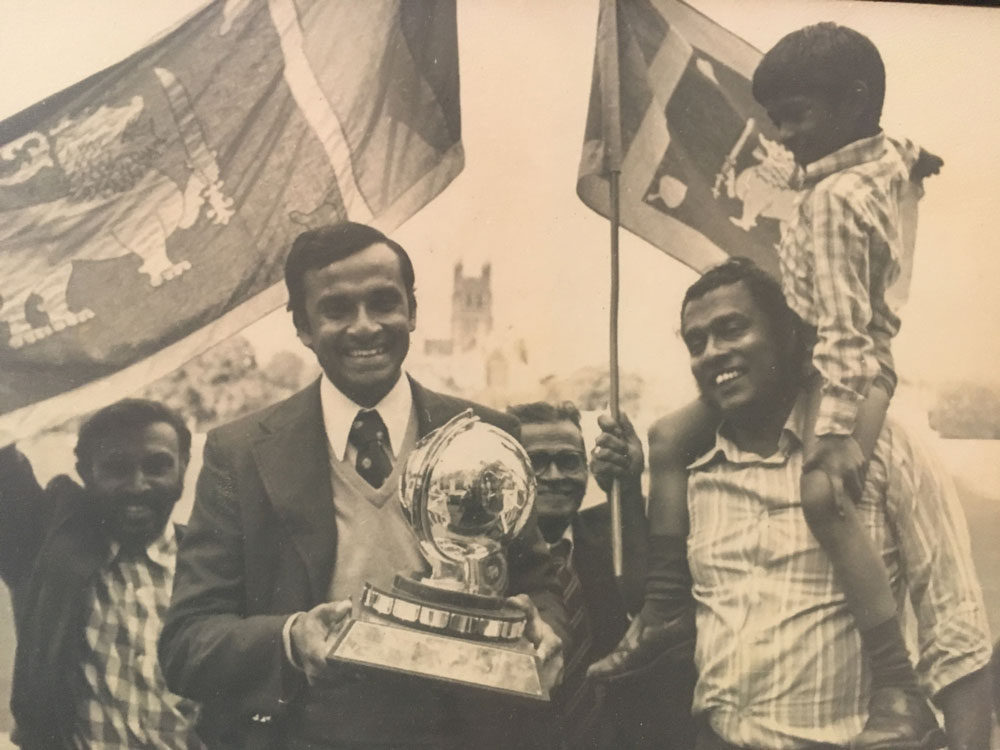I was boarded at S. Thomas’ College Mount Lavinia from the tender age of 8 in 1954 up to the time I left College in 1966.
There were around 200 boarders in the Hostel at that time. Whenever we had free time, mostly during the weekends and public holidays, we made use of this time indulging in sports. In the first and third terms it was mainly cricket inspired by the cricket season that was on, while in the second term the favourite sport was Hockey.
The very first Under 19 World Cup
In 1988, I had the privilege of managing the Sri Lankan Under 19 Team to the above tournament..
Leather ball cricket practices were conducted for different age groups from 4 to 6 p.m. However during the free time we had, our choice of cricket was with the tennis ball. Tennis ball cricket was of three forms. One was with eleven boys on each side with over arm bowling and the traditional pitch of 22 yards; the second game while having eleven boys per side, was with under arm bowling at a distance of approximately 10 feet. In both these forms the wicket was a metal sheet supported by a stick behind it. The bats used were wooden poles of 2 inches in width, which required a lot of concentration in order to connect the deliveries bowled at you. In the game where under arm bowling took place, there were expert bowlers who were able to squeeze the tennis ball and make it turn like a leg break or off break, giving little hint to the batsmen as to which way the ball would turn. The participants in these games comprised of senior and junior boys, which made it hard for the juniors. However this enabled them to handle pressure at a very young age, whilst developing their eye in having to bat with a pole half the width of a normal cricket bat.

The third form of cricket was called Fives Court Cricket. Fives was introduced to S. Thomas’ by a British Warden of the College. This game was similar to squash with the main difference being that fives was played with the bare hands instead of a racket as in squash. The fives ball was slightly bigger and harder than the squash ball. There were four fives courts in the College and since fives was not played by many boys, there was always two to three courts vacant. The Boarders therefore devised a form of cricket in the fives courts, where the wickets were drawn on the wall behind the batsman in chalk or brick. The bat used once again was the same two inch pole used in the other two formats. This game could only be played with four individuals due to the confined space, with one batting, another bowling under arm and two others fielding. Scoring could only be done by hitting the ball on the wall directly in front of the batsman. Two runs were given for a stroke hit along the ground. A stroke which was hit over the butt, a wooden panel at a height of about four feet off the ground earned four runs. If the batsman was able to hit the ball directly on to the wall in front of him full for it to ricochet on to the wall behind him, six runs were awarded. The batsman had to be cautious in lofting the ball as catches were permitted off the walls on either side of the batsman and directly in front. Due to this factor, I mainly concentrated on hitting the ball along the ground and earning two runs without trying to score fours and sixes. In this manner I was able to bat for a long time much to the annoyance of the other participants. It must be said that this form of cricket helped me when playing the orthodox form of cricket with the leather ball, as I had perfected the art of scoring runs in the V whilst keeping the ball along the ground.
A Memorable Big Match Victory
I had the privilege of playing in the prestigious Royal Thomian Cricket Encounter.
During the school holidays as we were residing in Kandy, the boys from the neighborhood assembled on the road in the evenings and played cricket with the tennis ball and a standard bat. Here again we were compelled to hit the ball straight as if we did not, the thick shrub on either side forced us to search for the tennis ball depriving us of valuable playing time. There were occasions on which boys who played cricket on the roads as we did challenged us for tennis ball cricket matches and as flat land was scarce in Kandy, these matches were played on paddy fields that had dried out after harvesting. As the playing surface was uneven and the bounce of the ball unpredictable, scoring runs was an arduous task.

On reflection, I feel that all these forms of cricket that I participated in helped me to develop as a batsman and cricketer and enabled me to represent the country at the highest level of cricket.














